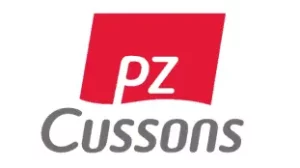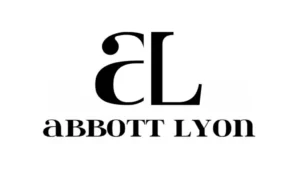Home / Supply Chain Consultants / Inventory Optimisation
Inventory Optimisation
We have the expertise to optimise inventory, reduce cost and improve service.
INTRODUCTION
The inventory safety net
Inventory is a requirement to protect supply and is one of the most important safety nets of any supply chain. Inventory ensures continuity of supply and service requirements during procurement or manufacturing lead times. It also serves to protect against unplanned variations to demand and supply within those lead times.


INVENTORY CONTROL
The challenges of inventory control
All inventory levels must be justified and minimised. Every business needs to have a clear inventory management policy that ensures inventory levels are bridged with required service levels. ‘Just in case’ and ‘x-weeks of supply’ approaches are wholly inefficient and risk, not just higher inventory investment, but also poorer customer service levels, higher warehouse operating costs and stock obsolescence.
Principally inventory targets should be comprised of two elements: cycle stock and safety stock. Cycle stock is there to cover the normal expected demand during the replenishment lead time, whilst safety stock is an additional buffer to protect against unexpected demand and supply variations.
The assessment and calculation of cycle stock and safety stock can be complex, requiring a detailed understanding of probability and statistics. The is where our inventory consultants excel; we not only bring the knowledge and methodology for inventory optimisation, but we also combine this with our real-world experience of supply chain operations.
CLIENTS
Who we work with




















HERE TO HELP
Optimising inventory targets
Our inventory consultants can undertake a full inventory analysis for you. Using historical and forecast data we can establish the optimum inventory target for every product, based on the target service levels required and any working capital restrictions that need to be observed.
There are many approaches to establishing optimal inventory targets we can take, depending on the client requirements and the industry sector. Whatever inventory challenge you face, we’re here to help.

CONSULTING SERVICES
Approach to inventory optimisation

Step 1: Data Collection
Inventory modelling requires extensive statistical analysis and consequently requires a solid foundation of transaction and forecast data. It is crucial to the process of inventory modelling to establish at least a 12-month data profile reflecting product sales, product purchase costs, planned lead-times, actual lead-times and supply variations.
Building the data profile is the first task our consultants undertake. Of course, we understand that, for many businesses, data extracts from their systems aren’t always perfect. To negate potential data errors our consultants are adept at cleansing and validating transaction and forecast data.

Step 2: Portfolio Classification
Investment into inventory has to be prioritised according the products with the greatest commercial or strategic value. Not all products in a company’s portfolio will achieve the same margin, and it is logical to balance inventory levels in favour of products with higher margins or higher strategic importance.
In order to classify the importance of individual products, an ‘ABC analysis’, sometimes referred to as ‘runners, repeaters, strangers analysis’, must be undertaken. There are many factors that should be considered in this type of analysis, including margin, sales frequency, strategic fit and volume.

Step 3: Probability Analysis
A probability analysis needs to be undertaken using a combination of historical transaction and forecast data. A detailed and fully assessed model must be created to establish the probability of events such as supplier delays, variations in supply volume, manufacturing delays and non-forecast demand.
Probability analysis is the key driver for a fully optimised inventory policy. All too often businesses ignore this step and use roughly right policies of x weeks supply without consideration to events such as delays or non-forecasted demand.

Step 4: Service Levels
Each product needs to have a service level assigned. The service level is typically set as a percentage and relates directly to ‘on-shelf’ availability.
The service level assignment should be aligned with the portfolio classification. So potentially products that are classified as ‘A’ may be targeted at 99% on-shelf availability, whilst products classified as ‘B’ may be targeted at 95% availability and so on. This ensures that working capital is deployed in proportion to where the most value is returned.

Step 5: Reorder Points
There are two elements of an inventory target: cycle stock and safety stock. These two elements added together provide the reorder point (ROP). The ROP is the level at which the stock must be before a replenishment order is placed.
Using the probability analysis and service level targets, the ROP will be the optimum level of inventory that will ensure supply during the replenishment lead time and protect against any unforeseen fluctuations in supply or demand.

Step 6: Scenario Modelling
As a focus for improvement, it is of value to undertake ‘what-if?’ scenario modelling against the calculated inventory targets. Typical scenarios to model include the impact to inventory costs of lead time reduction or varying service levels.
Scenario modelling is also a great opportunity to demonstrate to the business the cost benefit analysis of increasing service levels, or potentially, decreasing service levels for products that are no longer a core part of the business offering.
INSIGHT
Inventory articles & advice

How to Determine a Product’s Maximum Level of Inventory
There’s a common thread on many industry discussion forums posing the question – ‘how can I determine a maximum level of inventory for a product?’.

Inventory Management for Small Business – 5 Helpful Tips
The challenge of inventory management Inventory management is a challenge for any small business. Inventory equals cash and that cash is only accessible when the

10 Questions: How Effective is Your Inventory Management?
Inventory is a necessity in many businesses to enable service performance, but it is also one of the most significant investments many businesses make. Consequently,
TESTIMONIALS
Client testimonials










